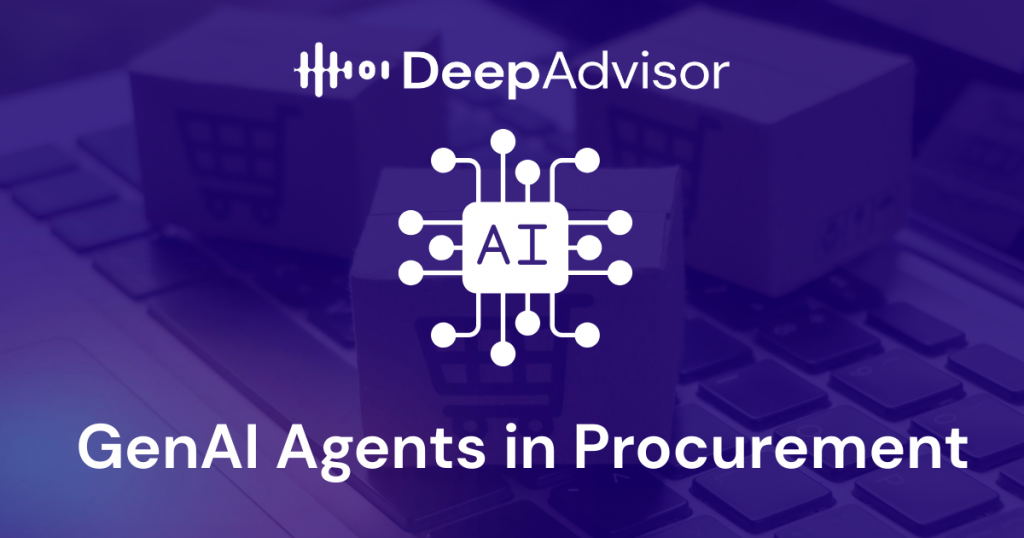GenAI Agents in Procurement: Real-World Deployment and Impact
by Christian Ruck – Co Founder of Deepadvisor
The application of GenAI agents in procurement is not theoretical—it is already a reality. We successfully implemented a framework for building custom agents on the DeepAdvisor platform, supporting both orchestrated and autonomous agent architectures.
How do these agents actually work? Let’s break it down:
Orchestrated Agents: Structured Precision for Complex Tasks.
- Operate on deterministic, user-defined processes (low-code).
- Combine multiple LLMs to execute predefined task sequences.
- Configurable decision-making thresholds
- Optional human-in-the-loop validation (because, let’s face it, sometimes you want to double-check the AI’s ideas)
- But here’s the catch: you need to map out the process in advance, breaking workflows into discrete AI tasks. Change the process? You’ll need to tweak the task definitions and LLM prompts. The primary technical headache? The LLM’s context window. (Yes, size does matter—but parallel or sequential processing can help.)
Typical use cases:
- Extensive Internet market research for new suppliers or alternative products.
- Creating supplier or procurement category profiles to prepare for negotiations.
- Document-based assessments (think ISO 27001 audits—fun, right?)

Autonomous Agents: Adaptive Intelligence for Unstructured Challenges. Autonomous agents don’t need a strict playbook. They:
- Understand context using relevant concepts, associated data structures, and access to specialized tools (including orchestrated agents—yes, AI can call other AI, like a digital buddy system)
- Use a “conceptual roadmap” to find optimal paths, retrieve info, and ask follow-up questions.
- Manage large volumes of data and store intermediate information by interacting with a multi-model database (because even AI needs to remember where it put its keys)
- Combine probabilistic reasoning (LLMs) with deterministic database results for reliable results.
Initial use cases:
- Reviewing how many contracts in a category/country accept supplier T&Cs.
- Identifying and evaluating penalties in contracts based on real supplier claims.
- Verifying whether the payment terms on invoices from spending transactions match what was contractually agreedupon.
These implementations are the first steps towards real automation, improved accuracy, and strategic insights that were wishful thinking a year ago.
What do you think:
How ready is your organization to let AI take over the “boring” (but business-critical) procurement tasks—and what would you do with the time you gain back?
Interested in exploring GenAI-driven procurement solutions? Connect with us to discuss use cases and implementation strategies.

